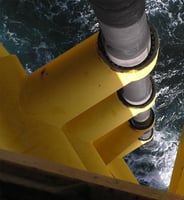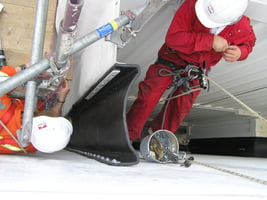Offshore topside structures must be designed for safety, reliability, and longevity in order to...
The Potential of Rubber-Based Piping Systems for Tunnel Infrastructure
When it comes to tunnel construction, one of the most critical considerations is the piping system that facilitates water management, ventilation, and utility transport. Traditionally, steel has been the material of choice for these systems due to its strength and durability. However, recent advancements in material science have prompted engineers and researchers to explore alternatives that could offer unique benefits. Among these alternatives is the concept of rubber-based piping systems. While it may seem unconventional, the potential for using rubber-based materials in tunnel infrastructure holds promise for various reasons, including flexibility, cost savings, and corrosion resistance.
1. Flexibility and Durability
One of the primary advantages of rubber-based piping is its inherent flexibility. Unlike steel, which is rigid and requires precision in alignment and installation, rubber can adapt to small shifts and movements in the ground. This characteristic could be particularly beneficial in tunnels that pass through areas prone to seismic activity, ground settling, or variable terrain conditions. Flexible materials allow the piping system to bend and adjust without fracturing or compromising the integrity of the tunnel’s infrastructure.
Additionally, rubber materials have been proven to absorb vibrations better than steel. In tunnels where high-speed rail or vehicular traffic generates significant vibrations, rubber-based systems will help to reduce wear and tear on the piping network, extending the life of the infrastructure.
2. Corrosion Resistance
One of the most significant challenges faced by traditional steel piping systems is corrosion, particularly in tunnels where moisture and harsh environmental conditions are common. Steel, even when treated with coatings, will degrade over time, leading to leaks, structural failures, and costly repairs.
Rubber-based materials, on the other hand, offer natural resistance to corrosion. In environments where water, salt, and other corrosive elements are present, rubber pipes will provide a longer-lasting solution without the need for frequent maintenance. This feature makes rubber an attractive option for tunnels in coastal or underwater locations, where exposure to saltwater and other corrosive agents is inevitable.
3. Cost-Effectiveness
While the upfront cost of steel piping systems may be comparable or even lower than that of rubber-based alternatives, the lifetime costs of steel can quickly become significantly higher due to maintenance and repair needs. Rubber-based systems, with their corrosion resistance and flexibility, require less frequent repairs and replacements, which lead to substantial cost savings over time.
Moreover, the installation process for rubber piping has proven to be more straightforward and faster than steel, which often requires specialized tools, welding, and precise alignment. The simplicity of installing flexible rubber materials could reduce labor costs and downtime during construction.
4. Environmental Impact
As infrastructure projects aim to become more sustainable, the environmental footprint of the materials used becomes a key consideration. Steel production is highly energy-intensive and contributes significantly to carbon emissions. Rubber-based materials present an opportunity to reduce the environmental impact of tunnel construction.
Rubber’s longer lifespan and lower maintenance needs translate into fewer resources being consumed over the lifetime of the piping system.
5. Challenges and Considerations
While rubber-based piping systems offer several advantages, there are a few challenges that engineers would typically consider.
- How does the system handle high-pressure or load-bearing situations?
- What is the level of resistance to extreme temperature and fluctuations?
Elastopipe™ A Promising Alternative for Specific Applications
The potential for using rubber-based piping systems such as Elastopipe™ in tunnels is promising, particularly in environments where flexibility, corrosion resistance, and cost savings are key priorities. While steel remains the industry standard for many projects, the advantages offered by rubber-based materials is making them an increasingly attractive option for modern tunnel construction. Elastopipe™ is extremely durable having been used in tough offshore and marine environments, handling high-pressure, load-bearing and extreme temperature situations extremely well.
The future of tunnel infrastructure may well include a combination of materials—steel, rubber, and others—working together to create safer, more efficient, and sustainable transportation networks.







